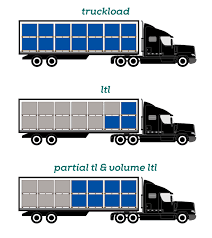In the dynamic realm of logistics, where time is money and efficiency reigns supreme, understanding the nuances of FTL (Full Truckload) freight rates can be the key to optimizing your supply chain and driving cost-effective transportation solutions. FTL freight rates, often the cornerstone of businesses reliant on large-scale shipping, play a pivotal role in shaping decision-making processes and ultimately impacting the bottom line.
Deciphering Truckload Shipping Service:
FTL freight rates represent the cost associated with transporting a full truckload of goods from one location to another. Unlike LTL (Less Than Truckload) shipments, where multiple consignments share space in a single truck, FTL shipments occupy the entire trailer, offering advantages such as faster transit times and reduced handling. However, understanding the factors influencing Truckload freight rates is crucial for accurate budgeting and informed decision-making.
Factors Influencing FTL Freight Rates:
Several variables contribute to the determination of FTL freight rates, including fuel costs, distance traveled, shipment size and weight, lane availability, market demand, and carrier capacity. Market fluctuations, seasonal trends, and external factors such as regulatory changes can also impact FTL rates. By analyzing these factors and staying abreast of market dynamics, businesses can gain insights into pricing trends and negotiate competitive rates with carriers.
Strategies for Optimizing FTL Freight Shipping Service:
Maximizing efficiency and minimizing costs are paramount objectives for businesses seeking to optimize Full Truckload freight quotes. Adopting strategic approaches such as freight consolidation, route optimization, and mode selection can help mitigate expenses and enhance operational efficiency. Additionally, leveraging technology-enabled solutions such as transportation management systems (TMS) and freight procurement platforms can streamline the rate negotiation process and provide real-time visibility into shipment tracking and performance metrics.
Navigating the Full Truckload Shipping Landscape:
In a competitive marketplace where every penny counts, navigating the Truckload freight shipping landscape requires a proactive and strategic approach. Partnering with experienced freight brokers or third-party logistics providers can offer access to a vast network of carriers and industry expertise, enabling businesses to secure favorable rates and optimize their transportation strategies. By fostering collaborative partnerships and embracing innovation, businesses can navigate the complexities of Truckload Shipping with confidence and drive sustainable growth.
In conclusion, understanding FTL freight rates is essential for businesses seeking to optimize their supply chain and gain a competitive edge in today’s fast-paced logistics landscape. By deciphering the factors influencing FTL rates, implementing strategic optimization strategies, and leveraging industry partnerships, businesses can unlock new opportunities for efficiency, cost savings, and operational excellence. Embrace the power of FTL freight rates, and embark on a journey towards sustainable success in the world of logistics.




